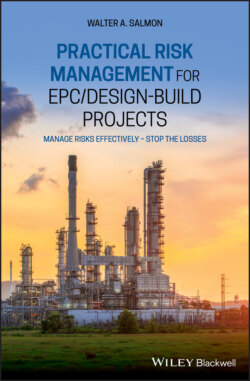Читать книгу Practical Risk Management for EPC / Design-Build Projects - Walter A. Salmon - Страница 33
3.3 Importance of Project Risk Management
ОглавлениеEven as late as the First Quarter of 2019, those in the Oil and Gas Industry were still facing a tough time getting new work, primarily owing to the lower price of oil that had struck home in 2015. The impact of this fall in price was that profit margins had to be tightened dramatically in order for a bidder to stand a chance of being awarded a new Project from amongst the considerably fewer new ones coming on stream. The contrast between the abundance of mega Projects that existed in 2007 and the dearth of such Projects at the date of completing this book is very evident to those old hands still working in the Middle East since that time. The significant drop in the numbers of expatriates working there compared with years ago is felt everywhere; many of the old haunts that were previously full to overflowing are now quite desolate. However, this situation has perhaps given time for some sober reflection, since it is also widely known that the mega Projects that arose as a result of the previous high oil prices (which reached around USD 120 per barrel in 2014) were not very successful, if not outright failures.2
In fact, there are two very sobering key factors emerging from the latter referenced document:
1 78% of mega Projects failed in terms of costs and schedule, while two-thirds fell short of production-attainment goals, and
2 half did not achieve at least 50% of the targeted production expected for the first 24 months of their operational lives.
Both of those factors are a clear indication that there has been a failure to manage the risks of mega Projects properly, and that Contractors must start to focus seriously on quality Project Risk Management if their thinner profits are not going to be eroded still further. It is a fact that all construction Projects have objectives at strategic, tactical, and operational levels.3 For most lump-sum EPC Projects, the responsibility for successfully handling all of those objectives falls to the EPC Contractor (who will also be burdened with severe penalties if any of the primary objectives are not achieved). Anything that could make achieving those objectives uncertain must therefore be considered to be a potential hazard that presents a risk, and which therefore needs to be countered as effectively as possible by the Contractor.
